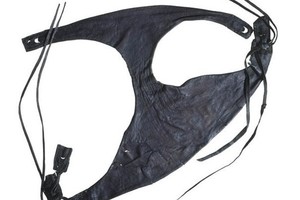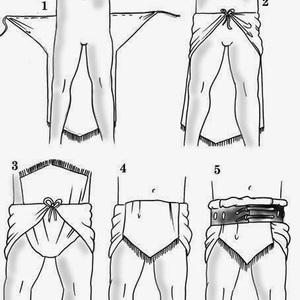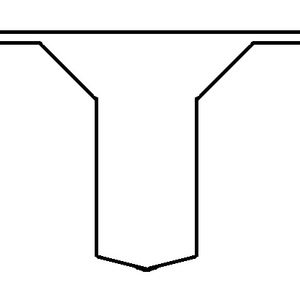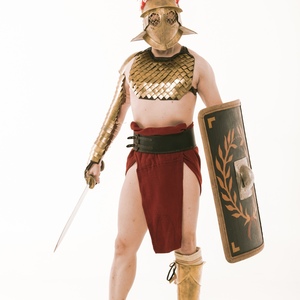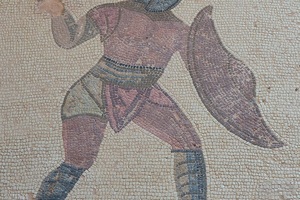Subligaculum
Subligaculum (Latin: subligaculum) was an undergarment in ancient Rome, a loincloth made of fabric or leather.
Subligaculum could resemble modern underwear or take the form of a T-shaped piece of cloth with two ties. It was part of the wardrobe of nearly all social classes in the Roman state; both military and civilian men and women wore the subligaculum under their tunics. There is evidence that the subligaculum was also worn by itself without any outer clothing, particularly by gladiators, athletes and wrestlers.
Archaeologists have found only leather subligacula, as leather is more durable. No complete fabric subligacula that could be identified as such have survived. A leather subligaculum belonging to a woman was found in a filled Roman well on Queen Victoria Street in London; it consists of thin leather briefs tied at the sides with laces. Such garments were likely worn by young female dancers or gymnasts. This particular find remained a unique archaeological discovery for many years, but other leather subligacula have since been found, some of which are richly decorated. Most discoveries have been made in Roman London, with one found in Mainz, Germany.
There are significantly more visual sources depicting subligacula: mosaics featuring gymnast girls, as well as numerous images of gladiators. It is also worth noting that the subligaculum was used not only by Roman citizens but also by other peoples, such as the ancient Egyptians.
Subligaculum for gladiators
The subligaculum was one of the essential garments for gladiators. Gladiators would wrap the short ends of the T-shaped subligaculum around their waist, tie it in a knot at the front, and then pull the long end from the back forward, draping it over the knot so that it hung down. The garment was secured with a leather belt (balteus), which could either completely cover the upper part of the subligaculum or leave some fabric exposed at the top. Gladiators' subligacula were exclusively made of fabric (thin wool or linen) in various colors: blue, red, white, and yellow shades have been observed.
Some bas-reliefs depict an "inverted" style of wearing the subligaculum, where the long end is secured at the back under the balteus.
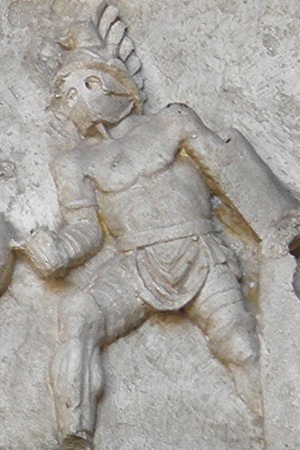 Gladiator in a subligaculum, fully covered by the balteus. Colosseum (Amphitheater), Colosseum Valley, Rome. 20-40 AD
Gladiator in a subligaculum, fully covered by the balteus. Colosseum (Amphitheater), Colosseum Valley, Rome. 20-40 ADReconstruction
The subligaculum can be used in the reconstruction of any ancient Roman outfit, and for gladiators, this garment is essential. The recommended materials are thin wool or linen, and to conserve fabric, the T-shaped subligaculum can be sewn from multiple pieces.
Related topics

 Gallery
Gallery






